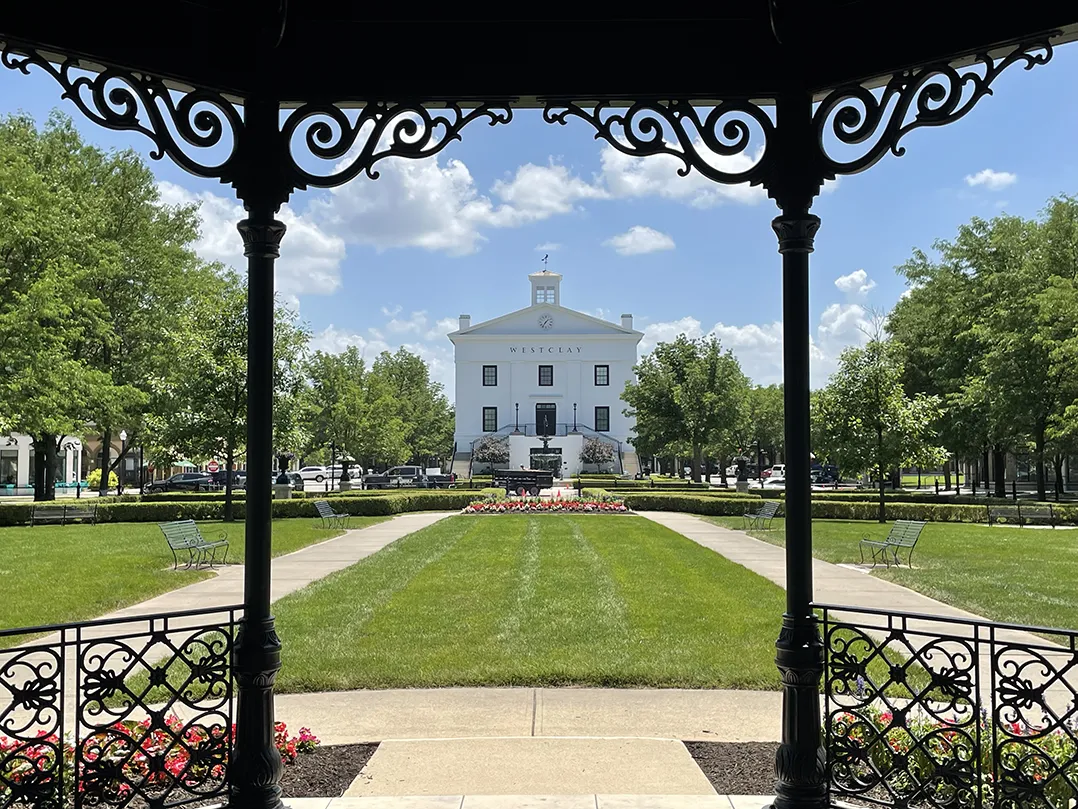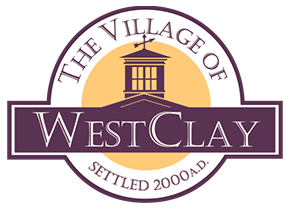
Story originally appeared in Current in Carmel
By Todd Golden on July 7, 2025
In 2000, much of northwest Carmel featured little more than sprawling fields punctuated with rural homes and outbuildings.
Today, the Village of WestClay’s bustling business district and 21 surrounding neighborhoods fill 760 of those once-empty acres. Its 5,000 residents are preparing to celebrate 25 years of growth and community with events planned this month.
“What an incredible asset to have in the city of Carmel,” Carmel Mayor Sue Finkam said. “It’s a beautiful property that’s evolved over time, but still kept its character.”
It wasn’t easy for an area once known for its fox hunts to transform into the thriving community it is today. But with vision and persistence, that’s exactly what happened.
‘A different path’
Well before WestClay was envisioned, subdivisions began cropping up on the periphery of Indianapolis in the 1960s. Many of those neighborhoods looked the same or cut out the intimate community experience many had grown up with. The hallmarks of neighborhood living – sidewalks, green spaces, businesses within walking distance – seemed to fall out of favor as urban sprawl took hold.
When it came time to develop land in west Carmel in the late 1990s, Village of WestClay founders Tom Huston and George Sweet, chairman and president, respectively, of Brenwick Development Co., wanted to forge a different path.
They designed WestClay using the style of new urbanism, which emphasizes multiple housing sizes, green spaces, parks and a focus on pedestrian accessibility.
Brenwick looked to Celebration, Fla., a planned community near Disney World, for inspiration. WestClay was also heavily influenced by the architecture of Savannah, Ga. and Charleston, S.C. Indiana influences include the Meridian-Kessler neighborhood north of downtown Indianapolis.
“The idea is to create a community that is intertwined with each other, where you can walk to parks, you can walk to your grocery, you can walk to a restaurant,” Terp said.
The idea wasn’t universally accepted in its earliest days.
“It took a while to get it through the City of Carmel,” Terp said. “Even though we were unincorporated, they still controlled the planning and zoning. Plus, the county had to get approval, required a lot of variances and finally they got final permission.”
Terp said the project involved more than 40 variances that had to be approved. It was still largely farmland, and there was resistance to development and all that goes with it.
“(Opponents) didn’t want the congestion. Didn’t want the traffic. Didn’t want a development. Back in the 90s, there were a lot of people in Carmel that lived on this side of Carmel that thought, ‘We can keep these 90-acre horse farms and nobody will care,’” Terp said.
After receiving necessary approvals, officials broke ground on the Village of WestClay on May 7, 1999. The first residents moved in a year later.
“I think by 2005 they knew they had a home run,” Terp said. “They knew this was going to work.”
Terry O’Brien, president of the WestClay Board of Directors, moved to the community from Meridian Hills in Indianapolis in 2016.
“There really is a strong sense of community,” O’Brien said. “We sit at our front porch all the time and get to know neighbors just walking by the house. It really is a throwback to a simpler time.”
‘There’s a sense of pride’
Each neighborhood within WestClay has its own architectural style, and residents have to maintain the character of their house in accordance with the standards of the village.
“You can’t change the outside of your house without getting approval, and it has to maintain the architectural integrity,” Terp said.
Retention has been important. Some families have gone from apartment renters to homeowners within WestClay.
“You have everything from apartments to smaller homes to larger homes. Lots of people move within the village. It’s something they were very deliberate about that I don’t think that type of community really existed,” said Sally Cutler, director of communications and resident services for the Village of WestClay.
The business community has been successful too. Terp said that close to half of the customers of businesses in WestClay are village residents, but the appeal of the area goes beyond its own borders.
“What I’ve seen most recently is that the business district has really started to thrive,” Finkam said. “There’s a lot of loyalty to the small business owners there and a lot of interaction to residents with the moms and pops that truly make those businesses run.”
Terp is excited about the future of WestClay.
“After 25 years, it’s still as nice a neighborhood as it was when we got started,” Terp said. “There’s a sense of pride.”
What’s in a name?
When the Village of WestClay was developed 25 years ago, part of its charm included using distinctively named public spaces and streets with a historical context.
The book, “The Village of WestClay: The First 25 Years,” explains the names. They include:
Treaty Line Street: Named after the treaty negotiated by William Henry Harrison with native American tribes in the early 1800s.
Blisland Street: Named for Blisland, a village in Cornwall, England.
Blore Heath: Named for The Battle of Blore Heath, a battle fought during England’s Wars Of The Roses in the 1400s.
Broughton Green: Named for Thomas Broughton, the first royal governor of South Carolina. Broughton Street is the main commercial street in Charleston, S.C., one of the inspirations for WestClay.
Chew Street: Named for John Chew, one of the earliest settlers in Jamestown, Va.
Horseferry Road: Named for Horseferry, a street in central London.
Horseguard Close: A British term based on the Horse Guards that protect royal formal processions.
Kossuth Street: Named for Lajos Kossuth, who led Hungary from 1848-49.
Montcalm Street: Named for Louis-Joseph, Marquis de Montcalm, commander of French forces during the French and Indian War.
Petigru Street: Named for James Louis Petigru, a Unionist former attorney general of South Carolina.
Shaftesbury Road: Named for Anthony Ashley Cooper, 3rd Earl of Shaftesbury, who helped establish the framework for colonial government.
Treaty Line Street: Named after the treaty negotiated by William Henry Harrison with native American tribes in the early 1800s.
